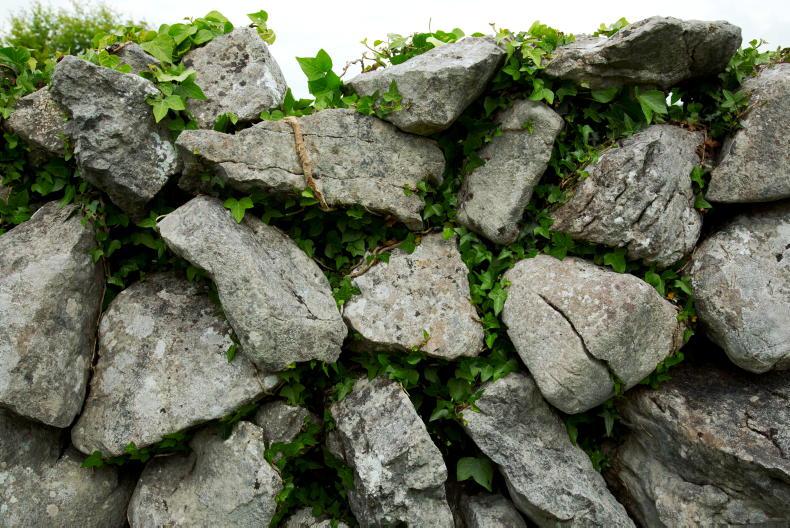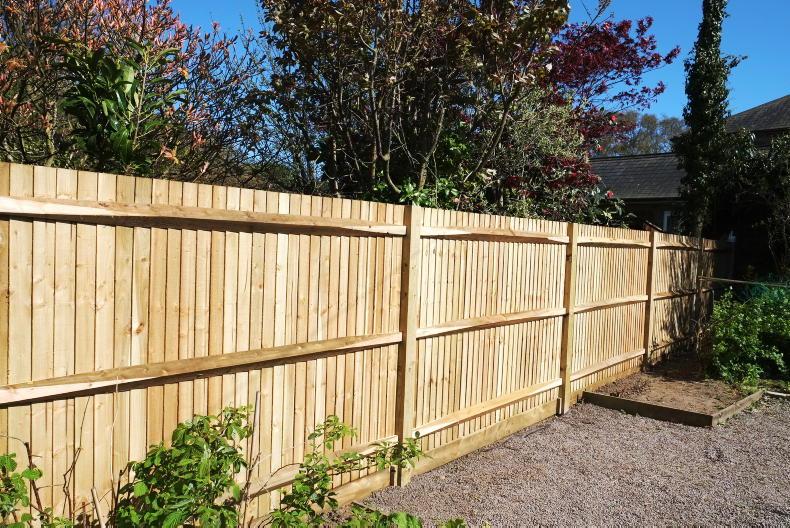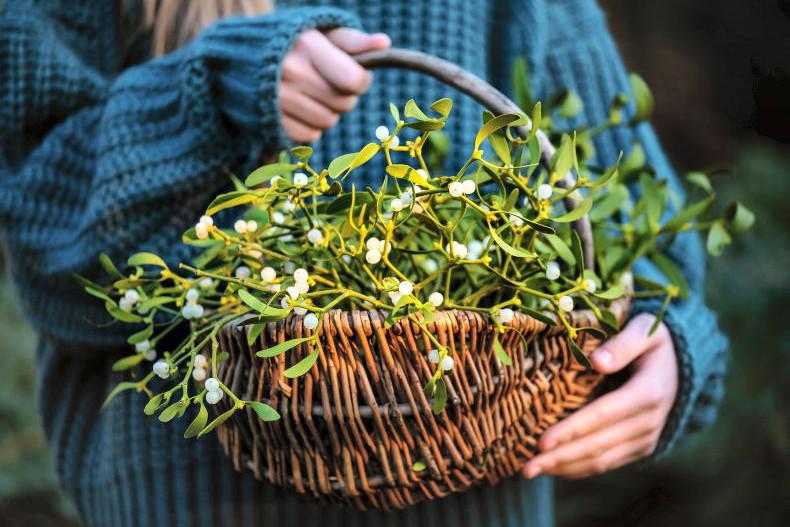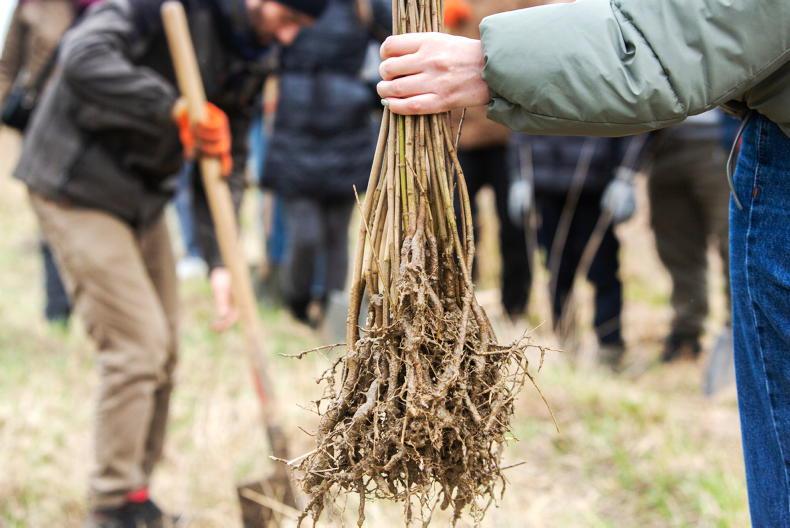Whether you are looking for a sound barrier from a busy road or more privacy in your front garden space, or even just a boundary between your home and livestock sheds – there are lots of solutions, Arthur O’Meara tells Irish Country Living.
“It is important to put some thought into the boundary you choose,” Arthur says, “like would you prefer a wall, fence, or greenery option, or a combination of two?
“Important factors to consider when deciding include the lighting and view that you may be sacrificing, as well as the maintenance, price and ecological impact or gain your boundary could have.”
Walls
Old stone walls are very often synonymous with the rural Irish landscape. Even today, many people still spend a lot of time and money rebuilding ancient stone walls and ensuring their upkeep.
“The moss and greenery that builds up on a stone wall can be treated, yes, but remember that it is part of the environment of that wall,” Arthur explains.

Stone walls are synonymous with Irish heritage. \ David Ruffles
“The food chain develops from that, for insects and birds and I think the moss actually looks quite well - adding a lot of character to the wall.
“Ivy can very easily get into a stone wall, but there is a ‘for and against’ for all these things. You can fight the battle against ivy, or you can go with it. It depends on how you look at it. Of course, ivy can eventually take from the structure of the wall, so you can keep it trimmed back.”
Opting for a stone wall in your garden space can be expensive, but is still a popular and a more long-term solution for many, he says.
“If there is a stone wall already there, cherish it! Remember though, if you are planning on sowing climbers or plants against a wall, a block wall that is dashed, or rendered can look just as good. That is a less-expensive option, if you are going to cover it in climbers anyway.”
Fencing
Another popular boundary choice is timber fencing. Stud fencing (also known as post and rail) is more common than lath fencing which is often seen in sub-urban areas.
“Stud fencing is often used around paddocks, or large open garden spaces. Lath fencing on the other hand, is a quick to install boundary solution for smaller gardens.

Timber fencing is a popular boundary option in gardens. \ iStock
“It is very effective for those who want immediate privacy. Lath fencing can look quite nice with climbers growing up along.
“Fencing is a much quicker and cheaper solution than a wall, but it may not be as permanent and does require a little more maintenance.
“Traditionally, people would have treated timber fencing with creosote.
“Nowadays though, you can buy pressure-treated timber and it should last for about 20 years.
While steel or wrought iron are more often seen in entrance and electric gates, they make great permanent and secure fencing for a boundary area. Certainly not the cheaper option, there are many design options to choose from, with much of it being manufactured here in Ireland.
Green boundaries
A combination boundary is another popular option for security, sound absorption and privacy reasons. Planting trees and shrubs along your wall or fence – with some taller and some smaller – also adds character to your border, Arthur continues.
“Out in the countryside, I think you should keep it as natural as possible – don’t try to introduce something that does not look at home in rural Ireland.
“Planting native plants like whitethorn, blackthorn (one of the first to flower), holly, beech and spindle, do not only look better, but also survive better in our climate and soil type.
“Green boundary options also provide great habitats for wildlife. So you should be mindful of that if you are taking out an old boundary hedging or trees.
“They are often a lifeline for bees and birds,” Arthur cautions.
Creating a double layer barrier with a wall and plants is a good idea, he continues.
“Choose plants with a crinkly leaf and you will have a good sound barrier. Holly is known for keeping down noise; because of the leaf shape.
“Wild rose along a wall makes for the perfect boundary hedge and looks great all year round. It is also a natural haven for birds, insects and all kinds of wildlife. It isn’t too expensive either and is easy to keep.”
Long-term fencing around paddocks require a strong plant that can withstand trimming from machinery.
For this, whitethorn and blackthorn are popular and effective. Trees also provide great shelter and act as a windbreaker, Arthur encourages.
“If you have room, of course plant an oak tree. It will support a thousand species of life, is a great tree for shelter and will live for up to one thousand years.
“You want to choose trees that will keep a pyramid shape; adding shelter and privacy but still allowing light into your garden.
“Mountain ash and wild cherry trees are great for a cottage garden space. Neither of those will grow into monstrous trees.”
With over 30 years experience in the area, Arthur has this advice for creating a competent and charismatic boundary for your garden space. “All of the plants I have named respond very well to trimming, so you can decide how much light or privacy you want in the garden yourself.
“This area can be expensive. So definitely read up before you decide on your boundary. I would not advise anyone to dig a trench around their site and plant a uniform laurel hedge, with no variation. Speak to a landscaper, or go for a drive and look at your neighbour’s border ideas, because you want your choice to fit into your local environment. What you see in a magazine is lovely, but might not work in your area.”
Read more
Mary's Garden: planting trees and plants for free
Planting for the next generation at Future Forests
Whether you are looking for a sound barrier from a busy road or more privacy in your front garden space, or even just a boundary between your home and livestock sheds – there are lots of solutions, Arthur O’Meara tells Irish Country Living.
“It is important to put some thought into the boundary you choose,” Arthur says, “like would you prefer a wall, fence, or greenery option, or a combination of two?
“Important factors to consider when deciding include the lighting and view that you may be sacrificing, as well as the maintenance, price and ecological impact or gain your boundary could have.”
Walls
Old stone walls are very often synonymous with the rural Irish landscape. Even today, many people still spend a lot of time and money rebuilding ancient stone walls and ensuring their upkeep.
“The moss and greenery that builds up on a stone wall can be treated, yes, but remember that it is part of the environment of that wall,” Arthur explains.

Stone walls are synonymous with Irish heritage. \ David Ruffles
“The food chain develops from that, for insects and birds and I think the moss actually looks quite well - adding a lot of character to the wall.
“Ivy can very easily get into a stone wall, but there is a ‘for and against’ for all these things. You can fight the battle against ivy, or you can go with it. It depends on how you look at it. Of course, ivy can eventually take from the structure of the wall, so you can keep it trimmed back.”
Opting for a stone wall in your garden space can be expensive, but is still a popular and a more long-term solution for many, he says.
“If there is a stone wall already there, cherish it! Remember though, if you are planning on sowing climbers or plants against a wall, a block wall that is dashed, or rendered can look just as good. That is a less-expensive option, if you are going to cover it in climbers anyway.”
Fencing
Another popular boundary choice is timber fencing. Stud fencing (also known as post and rail) is more common than lath fencing which is often seen in sub-urban areas.
“Stud fencing is often used around paddocks, or large open garden spaces. Lath fencing on the other hand, is a quick to install boundary solution for smaller gardens.

Timber fencing is a popular boundary option in gardens. \ iStock
“It is very effective for those who want immediate privacy. Lath fencing can look quite nice with climbers growing up along.
“Fencing is a much quicker and cheaper solution than a wall, but it may not be as permanent and does require a little more maintenance.
“Traditionally, people would have treated timber fencing with creosote.
“Nowadays though, you can buy pressure-treated timber and it should last for about 20 years.
While steel or wrought iron are more often seen in entrance and electric gates, they make great permanent and secure fencing for a boundary area. Certainly not the cheaper option, there are many design options to choose from, with much of it being manufactured here in Ireland.
Green boundaries
A combination boundary is another popular option for security, sound absorption and privacy reasons. Planting trees and shrubs along your wall or fence – with some taller and some smaller – also adds character to your border, Arthur continues.
“Out in the countryside, I think you should keep it as natural as possible – don’t try to introduce something that does not look at home in rural Ireland.
“Planting native plants like whitethorn, blackthorn (one of the first to flower), holly, beech and spindle, do not only look better, but also survive better in our climate and soil type.
“Green boundary options also provide great habitats for wildlife. So you should be mindful of that if you are taking out an old boundary hedging or trees.
“They are often a lifeline for bees and birds,” Arthur cautions.
Creating a double layer barrier with a wall and plants is a good idea, he continues.
“Choose plants with a crinkly leaf and you will have a good sound barrier. Holly is known for keeping down noise; because of the leaf shape.
“Wild rose along a wall makes for the perfect boundary hedge and looks great all year round. It is also a natural haven for birds, insects and all kinds of wildlife. It isn’t too expensive either and is easy to keep.”
Long-term fencing around paddocks require a strong plant that can withstand trimming from machinery.
For this, whitethorn and blackthorn are popular and effective. Trees also provide great shelter and act as a windbreaker, Arthur encourages.
“If you have room, of course plant an oak tree. It will support a thousand species of life, is a great tree for shelter and will live for up to one thousand years.
“You want to choose trees that will keep a pyramid shape; adding shelter and privacy but still allowing light into your garden.
“Mountain ash and wild cherry trees are great for a cottage garden space. Neither of those will grow into monstrous trees.”
With over 30 years experience in the area, Arthur has this advice for creating a competent and charismatic boundary for your garden space. “All of the plants I have named respond very well to trimming, so you can decide how much light or privacy you want in the garden yourself.
“This area can be expensive. So definitely read up before you decide on your boundary. I would not advise anyone to dig a trench around their site and plant a uniform laurel hedge, with no variation. Speak to a landscaper, or go for a drive and look at your neighbour’s border ideas, because you want your choice to fit into your local environment. What you see in a magazine is lovely, but might not work in your area.”
Read more
Mary's Garden: planting trees and plants for free
Planting for the next generation at Future Forests











SHARING OPTIONS